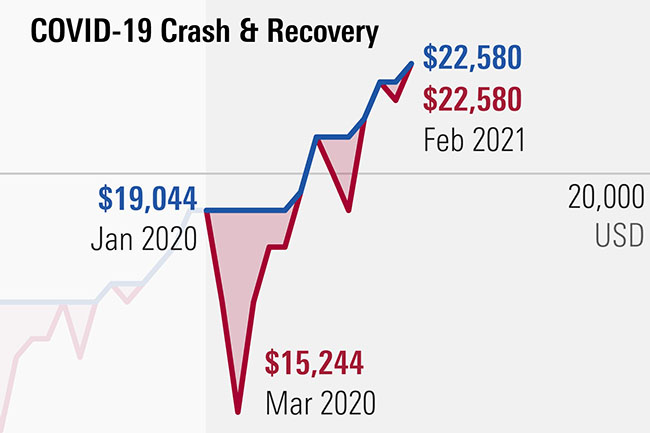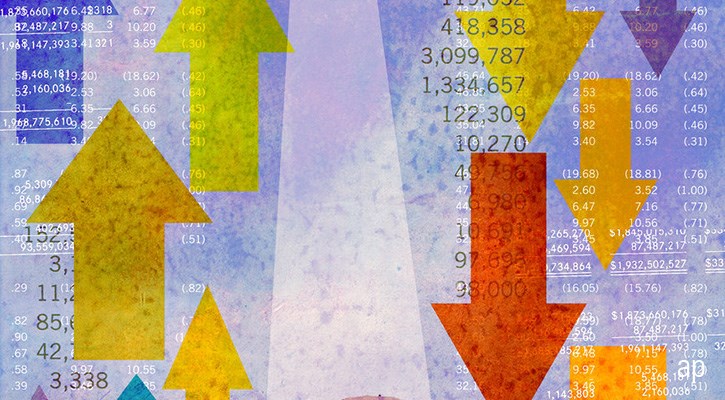
It was a year ago that the UK was first plunged into lockdown, with schools closed, socialising banned or non-essential shops shuttered. On the financial markets, coronavirus sparked panic and triggered a bear market. Professional investors were tasked with protecting capital, staving off outflows, and trying to predict when and where the recovery would come. So how did funds fare?
We analysed 330 Morningstar rated funds and found 74.8% were in positive territory in the year to March 10, 2021 (the date that Italy became the first European country to go into national lockdown).
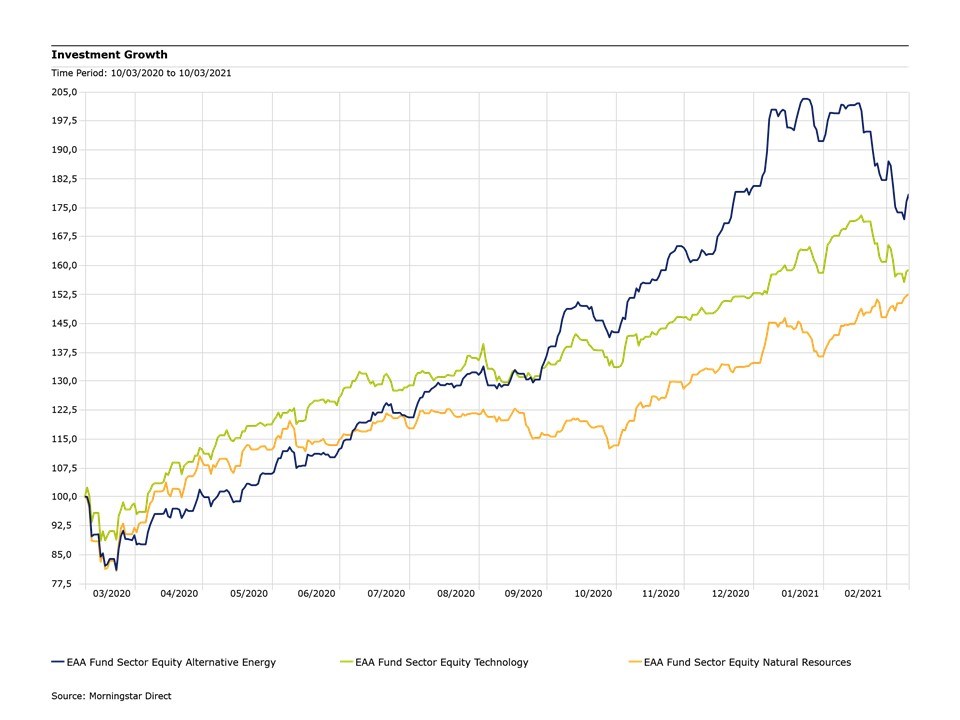
Looking at funds focused on large-cap companies, US growth funds have thrived, delivering an average return of 45.7% over the past year. The theme of growth is also evident in funds focused on other regions, as we can see in the chart below.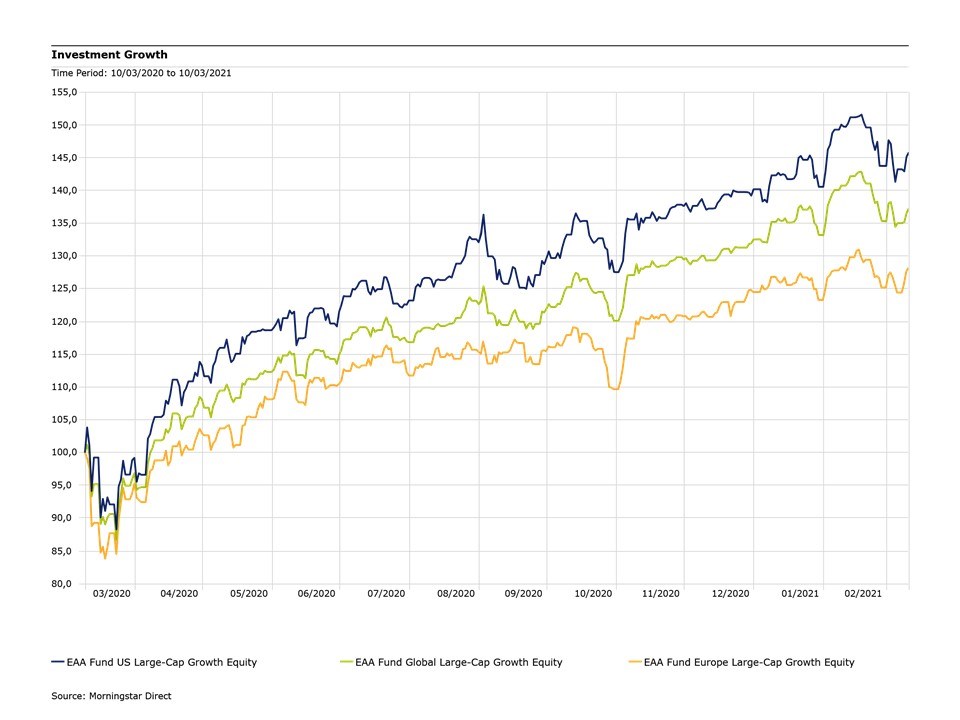
UK large-cap equity funds closed 2020 with an average loss of 14% in euro terms, but have enjoyed a better start to 2021, receiving a Brexit boost as a deal was finally struck with the EU at the eleventh hour. Still, UK-focused funds have lagged their continental counterparts, as shown by the below chart.
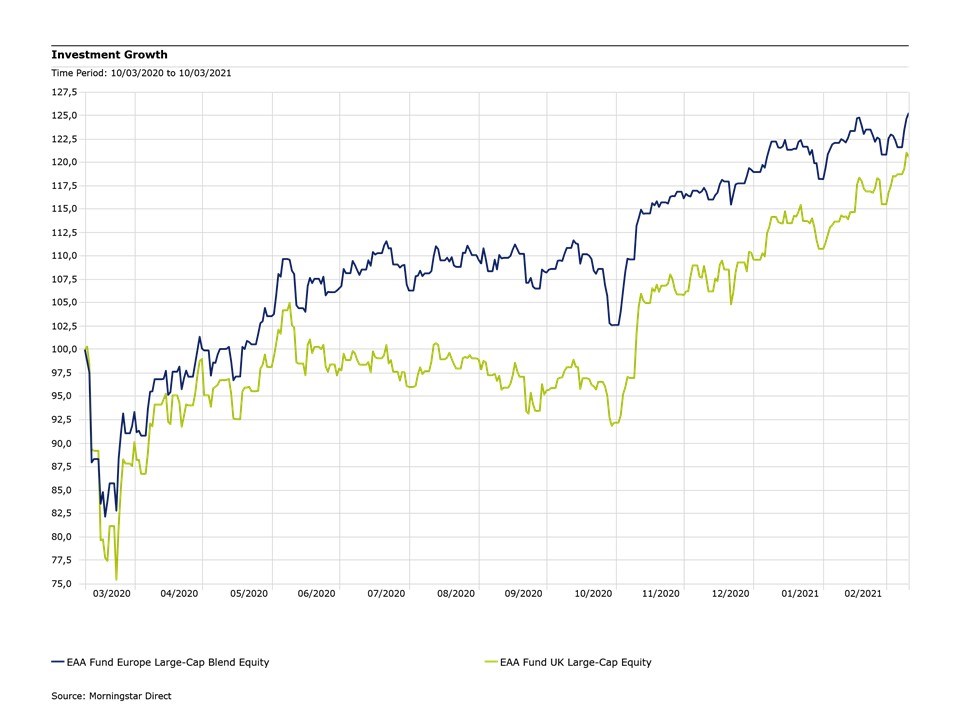
Energy was a volatile sector in 2020 as oil prices collapsed into negative territory and oil majors were forced to cut their dividends. It's little surprise then that the energy equity fund category was one of the weakest performers in the year. However, a year end rally has continued into the first quarter of this year and group has produced an average return of 44% over the past 12 months, as hopes of a global economic recovery and oil production cuts have raised the price of oil to a year-high and with it producer share prices. "This increase favours emerging countries that produce and export oil in two ways: by reducing their need for tax revenue and by improving their balance sheets," explains Andrew Keirle, manager of the T. Rowe Price Emerging Local Markets Bond fund.
What of emerging markets? Emerging market debt has not yet recovered its losses, but equity funds are largely in positive territory, with average gains of around 35%.
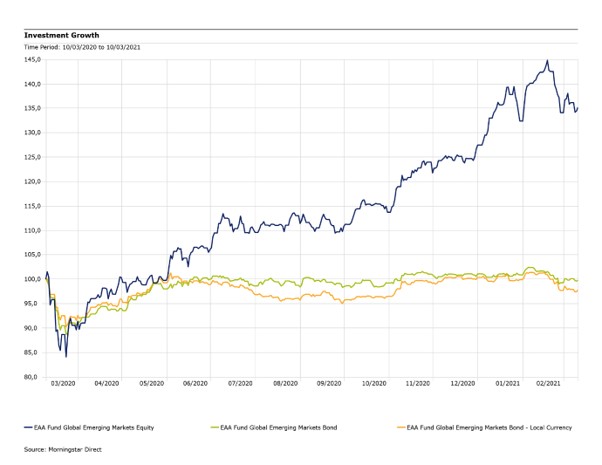
Another trend that emerged in early 2021 was a rally in small and mid-cap stocks. In the year to March 10, 2021, US small-cap stocks gained an average of 64.7%, global small-caps 48.4%, and European small-caps 42.6%. By comparison, funds with a focus on international large caps (blend-style) rose around 30%. The below chart shows US, Europe and Global small-cap equity funds compared to international large caps over the past year
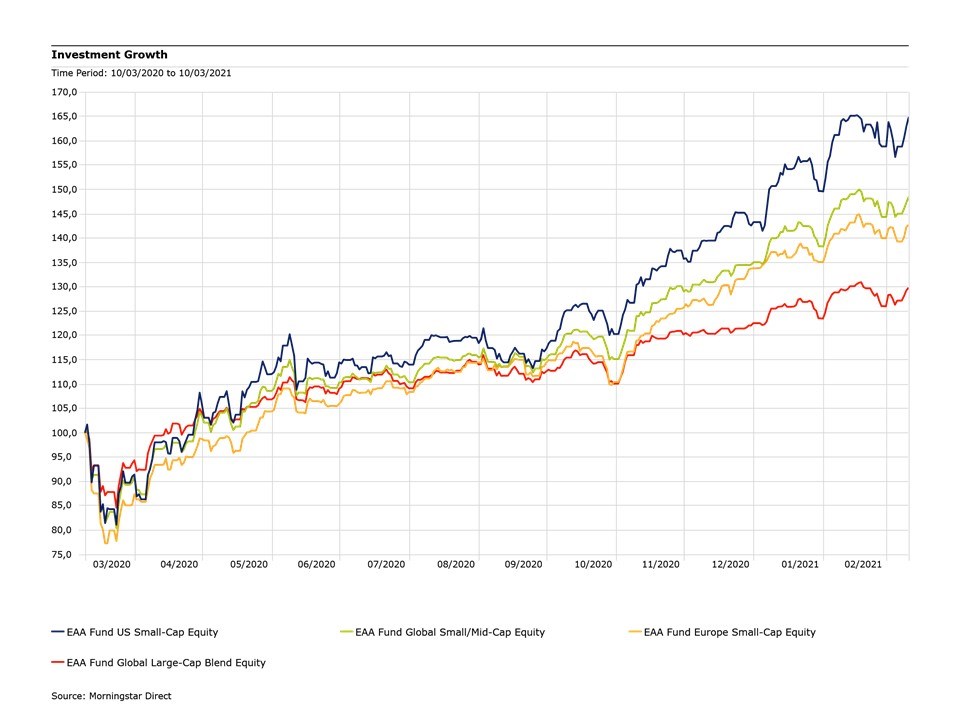
Finally, let's take a look at China, where the pandemic started. After being the first nation into a strict lockdown, few could have predicted the region would have been one of the strongest performers of 2020. Over the past year (as of March 10), Greater China equity funds gained an average of 40.7%, pushing the Asian region as a whole higher. "Among the key themes are sustainable development, the dual-circulation strategy that promotes domestic consumption and foreign investment through the Belt and Road plan, attention to the environment, technological innovation, security and urbanisation of the country," explains Lorenzo Riccardi, economist at Shanghai University. "Innovation and technological development remain central to government policies, with an annual increase of more than 7% in any investment in research. In addition, China plans a very long-term strategy that includes 2030, the year by which it commits to zero emissions in the fight against pollution and climate change."








